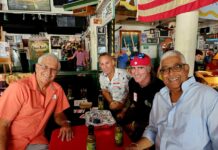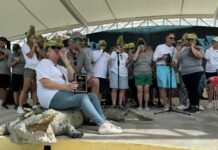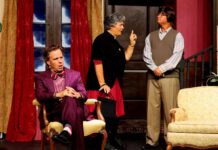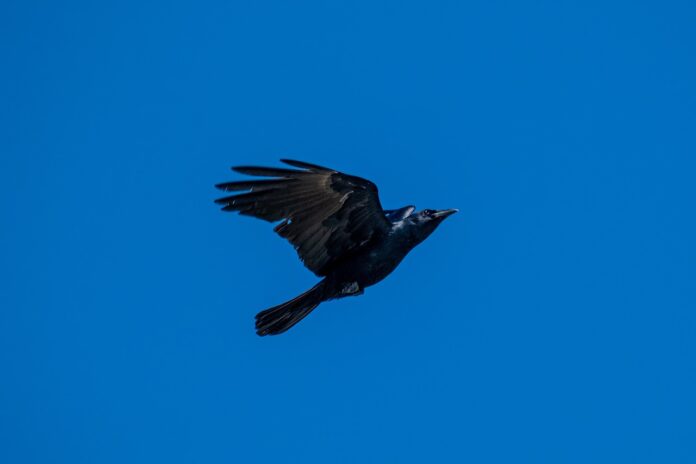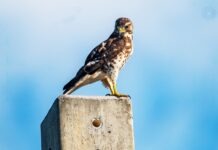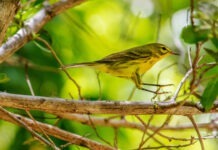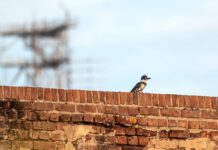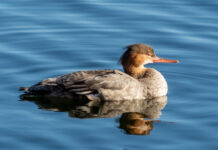We were out on the boat for sunset, because every once in a while it’s a good idea to remind yourself that you live on an island. My wife and I have a standing, decades-long joke, inspired by a long-forgotten local editor who would run a lot of highly basic, gee-whiz stories about Key West in the paper. At Fort Zach, Higgs Beach or out on the boat, one of us will inevitably, incredulously say, “Do you know this entire island is surrounded by water?”
No one else ever gets the joke. I’m not sure we totally do. But we’re not giving up on it. To quote Wayne from “Letterkenny,” “You don’t f**k with tradition.”
We cruised slowly out of Garrison Bight, which fortunately no one has yet tried to rename in a more pablumized, tourist-friendly fashion (I’m looking at you, Key West Historic Seaport), and the waterfront Navy housing, with its enviably long docks, solar panels and waterfront views, and then throttled up when we got to the seaplane ramp.
Last time we’d gone out, we’d anchored in the flats behind the mooring field off Wisteria Island, and it had been very pleasant. This week, though, we decided to anchor just west of Sunset Key, née Tank Island, so we could swim and enjoy the same sunset view the rich people get, but for practically free.
We threw the anchor in about 20 feet of water and cracked beers. Hans jumped in first, then Bre, then me, then Dave. My wife kept watch over the cheese board.
We were judging the architectural choices of the wealthy – everyone liked the place with the deep porches the best – when they flew in, two dark shapes whose wingbeats moved them across the sky with the casual efficiency of the overqualified. Fish crows.
Distinguishing a fish crow from an American crow can be tricky. Fish crows have longer wings and tails, shorter legs, and proportionally smaller heads, but often those are difficult distinctions to make, even if the two species are standing next to each other and not moving.
The most reliable test is by their call. American crows sound like, well, textbook crows, with their loud, absolutely unsubtle croaks and caws. Fish crows sound kind of like American crows, but their voices are much more pinched, as calling through a kazoo with the wax paper diaphragm removed to make fun of the avian normative American crows.
But there is also a much easier trick to determine which species you are seeing in Key West: We only have fish crows.
For years we’ve had a small group of about 14 of them on the island. I’m not sure why we have such a small colony, but crows, unlike some other species, have a habit of neither overpopulating nor under-populating an area.
I see them most often on Kennedy Drive for some reason. They like the area around the football field. But I’ve also seen them in Bahama Village, around the golf course on Stock Island and on the wires over Duval Street. (I never really see crows up the Keys until I get to the 18- Mile Stretch.)
I was out on a backcountry island once and saw a pair of them fly in from the general direction of Key West. They landed in a coconut palm for a while, then flitted around to a bunch of other trees, checking the place out. After about 20 minutes they looked at each other, took wing and headed back to Key West. They were on a walkabout, a drive in the country. They were on, if you’ll forgive using the name of one bird to describe the behavior of another, a lark.
Watching the two crows from the waters off Sunset Key, I was pretty sure these birds were also on a lark. They landed in the palm trees, then hopped down to the ground and strutted around for a while, as if taking it all in. Two more crows arrived. They hopped up onto a fence, then disappeared behind it, then flew up into the palms again. They were exploring, leaping from rooftop to rooftop, occasionally disappearing again behind the fences and foliage.
One of my favorite things I’ve ever read about crows, or any animal really, was an essay by David Quammen entitled “Has Success Spoiled The Crow? The Puzzling Case File on the World’s Smartest Bird.” In it he points out that they have “the largest cerebral hemispheres, relative to body size, of any avian family,” which gives them an excess of brain-power.
“They suffer from being too intelligent for their station in life. Respectable evolutionary success is simply not, for these brainy and complex birds, enough. They are dissatisfied with the narrow goals and horizons of that tired old Darwinian struggle. On the lookout for a new challenge,” wrote Quammen.
“Dolphins and whales and chimpanzees get all the fawning publicity, great fuss made over their near-human intelligence. But don’t be fooled. Crows are not stupid. Far from it. They are merely underachievers. They are bored,” Quammen wrote.
Boredom brings mischief. They play pranks on other animals, such as pulling the tails of rodents and other birds, and landing on sleeping cows, just to wake them up. They surf down snowy rooftops, snatch up small stones and play keep-away with each other, hang upside down from branches because they think it’s funny. They gather shiny things. They go on adventures to slake their curiosity.
Quammen’s essay was published close to 40 years ago, and there’s a heap of additional crow research out there now. The most recent thing I read was that researchers believe crows have reasoning abilities equal to 5- to 7-year-old humans, and superior to that of Rhesus Macaque monkeys.
Eventually the fish crows on Sunset Key made enough noise to attract the attention of a gray kingbird who, despite being a seventh their size, came in like a lightning bolt, and began mobbing them, harassing the crows until they took off again. (Gray kingbirds are known for viciously defending their turf, and this one most likely had a nest nearby.)
It was like watching a mall cop roust a bunch of surly teenagers. “Yeah, yeah, we’re going,” they seemed to say, moving on without hurrying. But you had a feeling they’d be back next time the mood struck.


